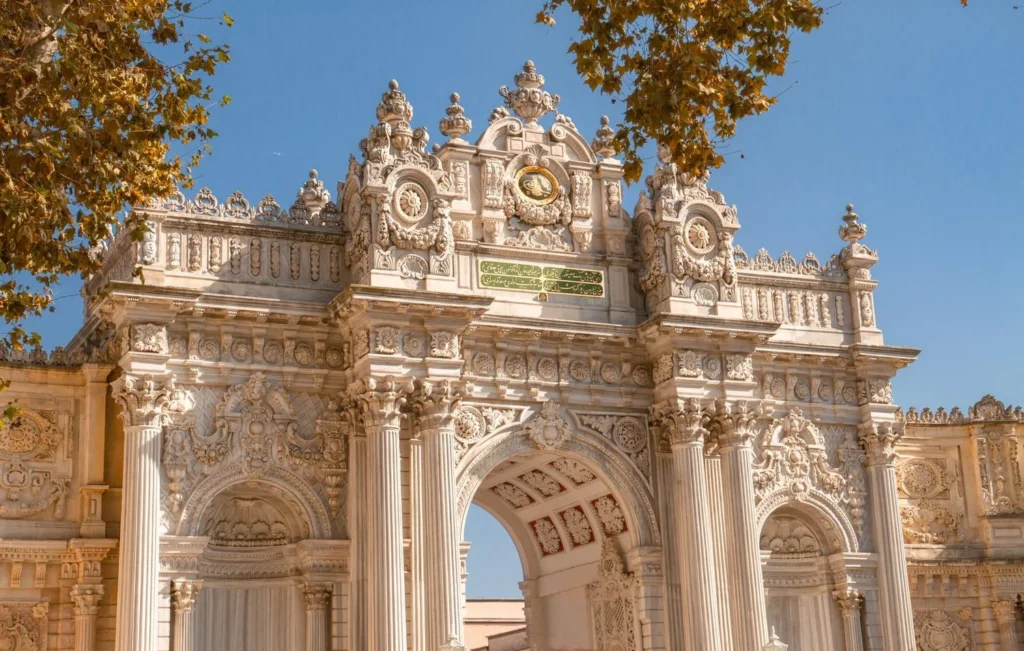Description
Dolmabahçe Palace: A Jewel on the Bosphorus
Nestled on the European shore of the Bosphorus Strait in Beşiktaş, Istanbul, Dolmabahçe Palace is one of the most stunning architectural masterpieces in Turkey. Built during the Ottoman Empire’s twilight years, this grandiose palace serves as a bridge between the empire’s opulent past and its encounter with modernity. With its magnificent design, rich history, and breathtaking location, Dolmabahçe Palace is a must-visit for anyone exploring Istanbul.
A Brief History
Dolmabahçe Palace was commissioned by Sultan Abdülmecid I in 1843 and completed in 1856. The Ottoman Empire was undergoing significant transformations at the time, and the palace was intended to symbolize the empire's embrace of European aesthetics while retaining Ottoman grandeur. Designed by Armenian architects Garabet Balyan, his son Nigoğayos Balyan, and Evanis Kalfa, the palace replaced the Topkapı Palace as the administrative center of the empire.
The name "Dolmabahçe" translates to "filled garden" in Turkish, reflecting the site's history as a reclaimed bay that was filled in to create a royal garden. Over time, the area evolved into a luxurious palace complex, boasting European architectural styles blended with traditional Ottoman elements.
Architectural Splendor
The palace spans an impressive 45,000 square meters and consists of 285 rooms, 46 halls, 6 baths (hamams), and 68 toilets. The design is a fascinating amalgamation of Baroque, Rococo, and Neoclassical styles, all adorned with Ottoman touches. The interiors are a feast for the eyes, featuring gilded ceilings, crystal chandeliers, intricate woodwork, and lavish carpets.
One of the most remarkable features of Dolmabahçe Palace is the Crystal Staircase, shaped like a double horseshoe and made of Baccarat crystal, brass, and mahogany. The chandelier in the Ceremonial Hall, a gift from Queen Victoria, is another highlight. Weighing 4.5 tons and featuring 750 lamps, it’s one of the largest crystal chandeliers in the world.
The palace's exterior is equally mesmerizing. Its façade stretches along the Bosphorus for 600 meters, offering visitors breathtaking views of the strait. The white marble walls and intricate carvings exude an air of elegance, while the meticulously maintained gardens add a touch of serenity to the grandeur.
Cultural and Political Significance
Dolmabahçe Palace is not just an architectural marvel but also a place of immense historical significance. It served as the administrative center of the Ottoman Empire during its later years. Moreover, it was the residence of Mustafa Kemal Atatürk, the founder of the Republic of Turkey, during his visits to Istanbul. Atatürk passed away in the palace on November 10, 1938, at 9:05 AM. Today, the clocks in his room are permanently set to that time as a tribute to his legacy.
Exploring Dolmabahçe Palace
A visit to Dolmabahçe Palace offers a glimpse into the opulence of the Ottoman Empire and the early days of the Turkish Republic. The palace is divided into three main sections:
- Selamlık (Men's Section)
This area was used for administrative purposes and official state functions. Visitors can marvel at the grandeur of the Ceremonial Hall, where lavish receptions and gatherings were held. - Harem (Private Quarters)
The Harem was the private living quarters of the sultan and his family. It provides an intimate look into the daily lives of the royal household, complete with ornate rooms and personal belongings. - Clock Museum and Gardens
The palace complex also houses a Clock Museum featuring a collection of exquisite timepieces. The surrounding gardens, adorned with fountains and sculptures, offer a peaceful retreat from the hustle and bustle of the city.
Practical Information
- Location: Dolmabahçe Palace is located in Beşiktaş, Istanbul, easily accessible by public transportation or a scenic walk along the Bosphorus.
- Opening Hours: The palace is open to visitors every day except Mondays. The hours may vary seasonally, so it’s a good idea to check before your visit.
- Tickets: Separate tickets are required for the Selamlık and Harem sections. Guided tours are available and highly recommended to fully appreciate the history and intricacies of the palace.
Tips for Visitors
- Arrive Early: The palace is one of Istanbul’s most popular attractions and can get crowded, especially during peak tourist seasons. Arriving early will allow you to explore at your own pace.
- Wear Comfortable Shoes: With its expansive grounds and intricate interiors, be prepared for a lot of walking.
- Photography Rules: While photography is allowed in the gardens, it is generally prohibited inside the palace to preserve its delicate artworks.
- Combine with Nearby Attractions: Dolmabahçe Palace is close to other iconic spots like the Bosphorus Bridge, Beşiktaş Square, and the Istanbul Naval Museum.
Conclusion
Dolmabahçe Palace is more than just a historical site; it’s a testament to the cultural crossroads that Istanbul represents. Its opulence and strategic location on the Bosphorus make it a shining jewel in Turkey’s tourism landscape. Whether you’re an architecture enthusiast, a history buff, or simply a traveler looking to immerse yourself in Istanbul’s rich heritage, Dolmabahçe Palace promises an unforgettable experience.
Location
-
Vişnezade, Dolmabahçe Cd. No:2, 34357 Beşiktaş/İstanbul







